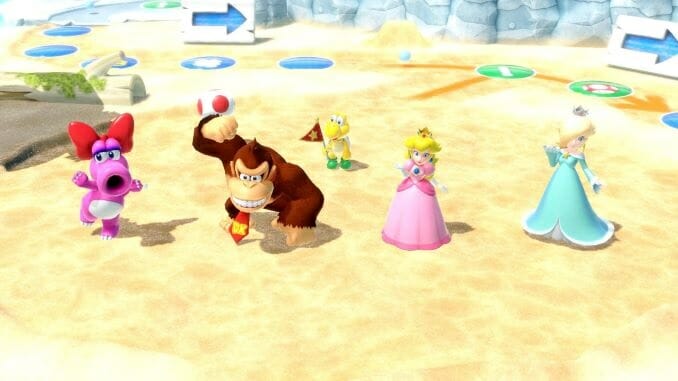Mario Party Superstars Is a Joyful Rebirth that Misses the Mark in a Few Crucial Ways

My brother once described Mario Party as a storytelling game. Making a massive comeback by winning a high stakes minigame or falling from the top of the pack in the last couple turns are examples of its emphasis on dramatic changes of fortune. It’s a little soap opera about economics to play with friends. I think about this every time someone complains about how unfair Mario Party is or how loose the minigame controls are. These complaints, even when they are fair, dodge the substance of the game. In a good round of Mario Party, it feels like anything can happen, like the right roll or a good minigame play can force a new player to victory. Rather than funneling players towards micro-transactions or diluting a fair competition, all of the game’s unfairness fuels a shared experience. Mario Party’s core joy, in fact, hinges on giving every player a chance to win.
Mario Party Superstars captures the joy of that as much as any Mario Party game to date, primarily because it’s a repackaging of five maps from the first three games, plus minigames from the entire series. It’s a nostalgia vessel for the internet age. For the unfamiliar, Mario Party is a casual multiplayer game about collecting stars. To do so, players, after picking a favorite Mario character, traverse a board, nab coins, play minigames, and use items to outwit or outroll other players. Whoever collects the most stars by the end wins.
Different boards have different gimmicks. In Space Land, spaceships push players around the map and Bowser counts down until he can shoot a giant laser beam. In Woody Woods, little moles guard crossroads and magnanimous trees will give you magical fruit. The games reward familiarity with the board and winning minigames is the primary avenue to obtain coins. However, every board still offers its share of sheer luck. If you land on the right space and have enough money, you can steal a star from another player. Every board has its share of spaces which perform their own contextual action. You can sometimes manipulate the board to block off other players or get yourself closer to the star, but that will just as soon backfire on you. The minigames themselves vary from four player free-for-alls, two-on-two match ups, and one vs. three team battles.
All these elements ensure a constant redrawing of social lines. In short, it creates drama. If Mario blocks Yoshi from getting a star and then Yoshi steals it back… only for them to be allies in the minigame at the end of the turn, that’s a little story. The rules are clear enough for straightforward stakes and off-kilter enough for delightful unpredictability. Think of the game as an opportunity to participate in and share a dramatic adventure with loved ones, rather than a real competition. Mario Party would be terrible esports, but it’s a perfect casual game and a delight to watch other people play.
Online has its own engaging, if limited, social dynamic. In my online matches, we maligned our losses and celebrated our achievements with reaction stickers. Even as we jested and jeered each other, the playful emotes prevented anything mean spirited. It lacks the personal grudges and shared laughs of a local game, but it has a pleasure of its own. It’s also a smooth experience, especially for a Nintendo title. I lost plenty of minigames, but never thought lag was to blame. It would undoubtedly be a blast with the right Discord server.